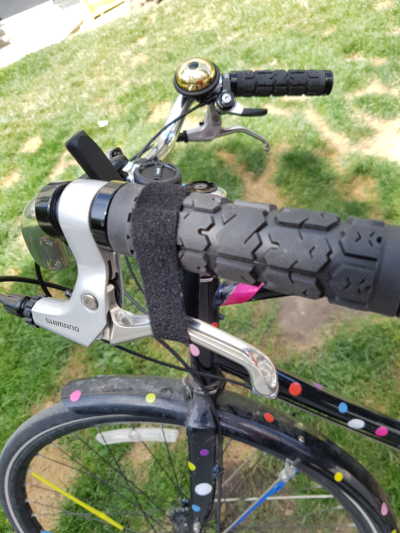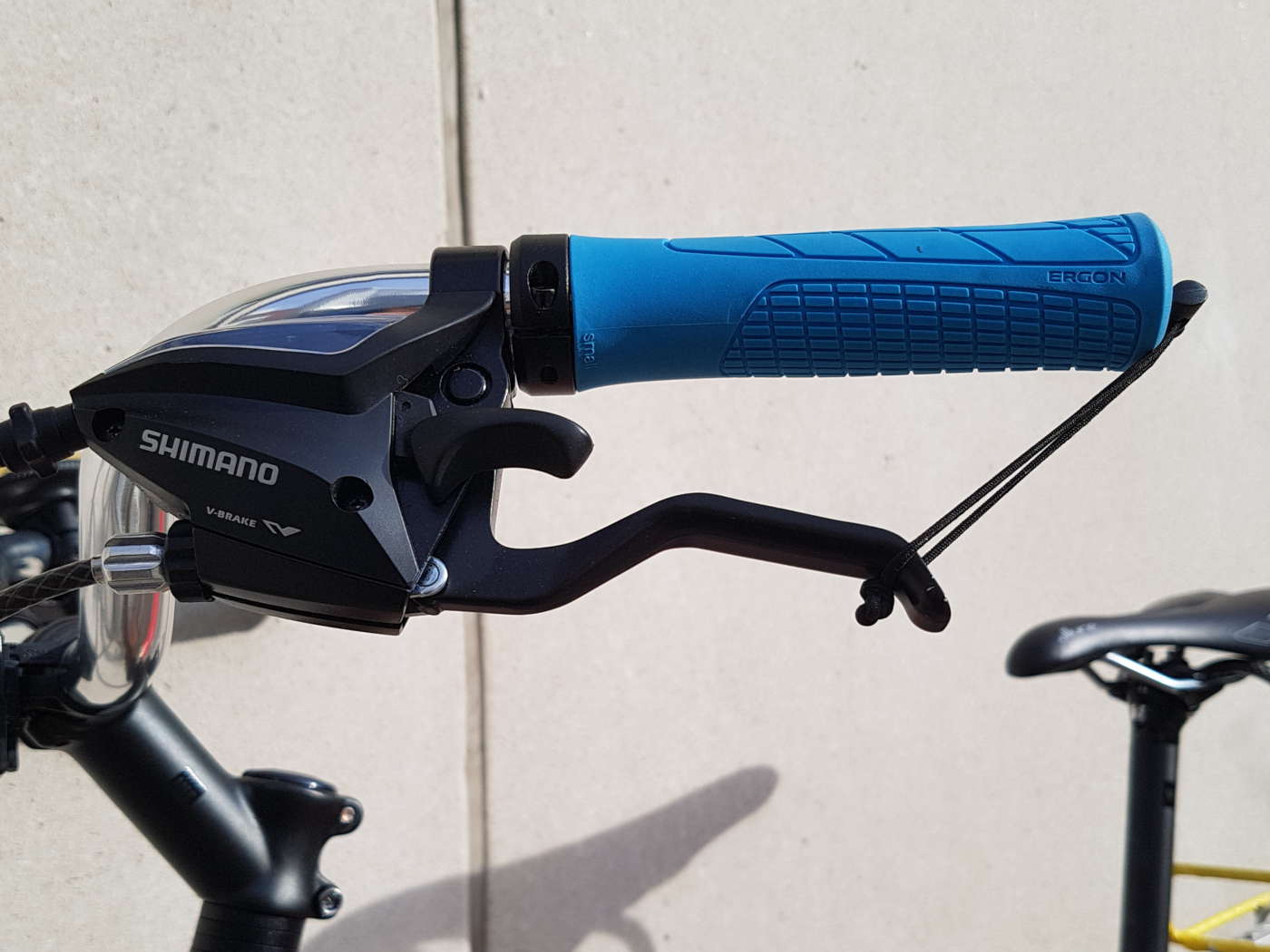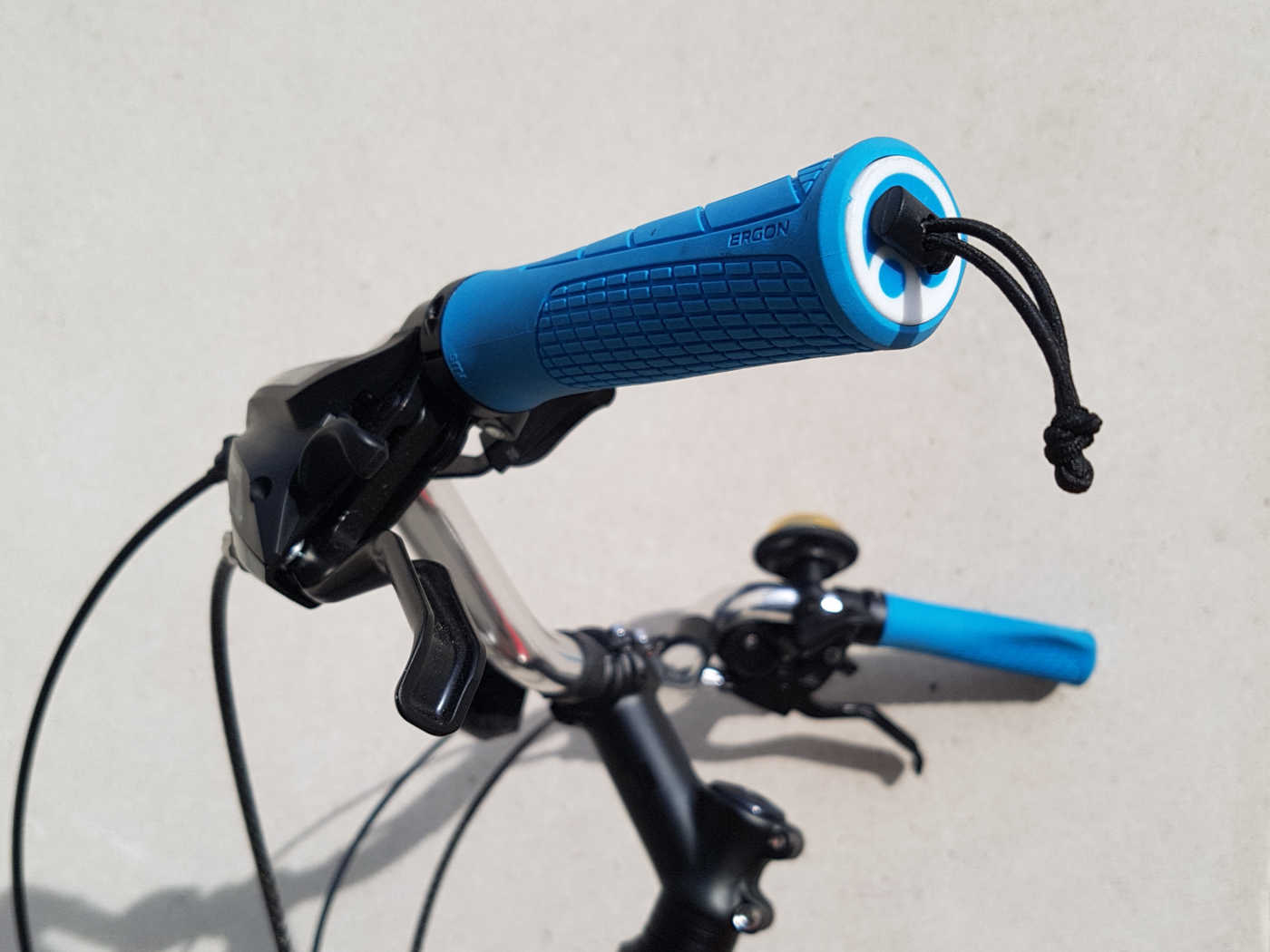Kickstand alternative for your bicycle or: How to lean your bike against something and not have it fall to the floor
Often a kickstand can be in the way. But if you don’t have one, then it’s tricky to lean a bike just so without it toppling over easily. Actually even if you do have one, it doesn’t always help—you see toppled bikes with kickstands all the time. I’ve tried a few things and come up with a trick for this which wins for me, perhaps you’ll find it useful.
When leaning your bike—either against a small kickstand, a tree, a post or anything else really—stability is the goal. A small nudge in any direction shouldn’t result in toppling. And yet that’s exactly what happens. Why? Because the bicycle’s position is not fully constrained. If the bicycle frame leans a little more, the fork will turn, the wheel will roll out further from under the bike and the frame will lean more as a result… in engineering terms that’s a positive feedback loop but for our intents and purposes, that’s your bicycle falling over.

In order to better constrain the position of the bike the handlebar and left pedal of the bike are jammed against the post
Even if a cyclist that doesn’t think about why this is happening will eventually learn to try to jam their pedal, handlebar and frame in some way that the bicycle will resist leaning any further, as in the example figure above. But you can’t always do this effectively; in a way that would be tolerant to a change in wind direction or being bumped.
Fixing the problem
A pretty good solution to this is immobilizing the front wheel. You already have a brake there, why not use it?
My first shot at this involved a short hook and loop (read: velcro) strap. It’s hook on one side, loop on the other. It lived across the pivot of the brake lever and when I needed it, I slid it toward the grip and tightened the strap. It definitely worked but was cumbersome enough to make me debate, ‘is this worth setting up right now?’

The front wheel of the bike is locked using a velcro strap to hold down the brake. It works to keep the bike from falling over, but takes time to apply and remove. There’s a better solution below.
A better solution
It wasn’t a big enough deal if it takes an extra few seconds on a once-or-twice a week basis, it’s not really worth optimizing. but I got a new bike so it was time do this correctly. I definitely like this approach better. A loop of shock cord holds the brake lever to lock the wheel and everything is dandy.

The front wheel of the bike is locked using a loop of shock cord (stretchy cord) to hold down the brake. It works to keep the bike from falling over and is very quick to apply
This isn’t anything fancy, just some 3/32" shock cord (1/8" would also work) tied in a loop to length. I I had this feature stock on a Strida folding bicycle. It’s intended to make the folded bike lean against a wall without falling down, and inspired the first velcro iteration above. but I don’t see it on bikes out there so I decided to write this up.

How the shock cord loop normally dangles from the handlebar plugs
Above you see the shock cord, loose as it sits while riding. It’s a loop, strung through a hole drilled in the handlebar plug and tied there so it doesn’t get out and tied at the end to adjust the length—short enough to squeeze the brakes and lock the wheel, long enough to easily fit over the brake lever.
Installation tips
First remove Not all handlebar grips come with plugs. However, the clamp on/lock on designs generally have plugs and I recommend them over the traditional friction-fit. They’re easier to adjust or remove when you want to, and to keep in place the rest of the time. I didn’t find that the ergonomic style you see with these blue grips is a particular improvement over the black grips you see on my last bike, but the color is nice :) Both were of the clamp-on variety, blue are Ergon GA3 and black are Odi Rouge. If you don’t already have a charity selected for Amazon Smile, consider Gates Philanthropy Partners from the side that has the front brake. Drill a hole into the center of it large enough to fit the cord but too small for a knot to pass through—I used a 3/16" bit. String a folded length of shock cord through the hole, leaving yourself more than you think you need so there’s room to adjust later. Tie a knot in the end behind the handlebar plugs (will be inside the handlebar when installed) which will keep the loop anchored.
Sometimes there is a bit of a plastic tube on the inside of the cap—that’s the case with the Ergon grips used above. You want the knot to end up very close to the flat wall of the cap rather than at the top of that tube, so there isn’t extra shock cord to stretch out inside the handlebar. That might mean pushing the knot into the tube or cutting the tube in some way. You’ll figure it out.
Once installed you’ll see how much length is right to lock the wheel and adjust with a knot at the end. At first, I thought I would do this adjustment with that cord lock you see against the handlebar plug, but turns out that slides too easily.
If you place the length-adjusting knot asymmetrically—that is, with one side of the shock cord slightly longer than the other—then the loop will naturally sit slightly open and will be easier to grab for stretching over the brake lever.
But what about the brake/cable?
Two friends asked upon first hearing this idea if there’s a concern about leaving the cable under tension for extended periods. That’s really not a problem, the forces here are smaller than normal use and the cable/housing system is designed for far larger loads in emergency braking. Consider the derailleur cable which lives under tension for basically its whole life, with thinner cross sections to boot. The brake cable can handle it. The brake pad/wheel interface is also under a smaller load than usual and it’s similarly not a concern.
If you end up using this trick, I want to hear about it! The biggest flaw to this design is the additional difficulty in installing handlebar streamers.
If you have any questions or suggestions, or even if you just found this post useful, send me an email and let me know! I would love to hear from you and it feels nice to know that the content I write is being read.
For more related content, look at my other posts on bicycles, or under the tag quick projects. And for other topics, see thoughts and projects on the homepage. This website is my little way to give back to the world wide web. If you like this kind of post, you can sign up to a periodic email about new content (no spam and painless to unsubscribe), follow my fairly quiet twitter account, or subscribe to this website in your favorite RSS reader.
There's no comments section on this website, but if I get a notable question or comment I will include it here manually—and in that case I will ask beforehand if/how you'd like to be credited or anonymous.